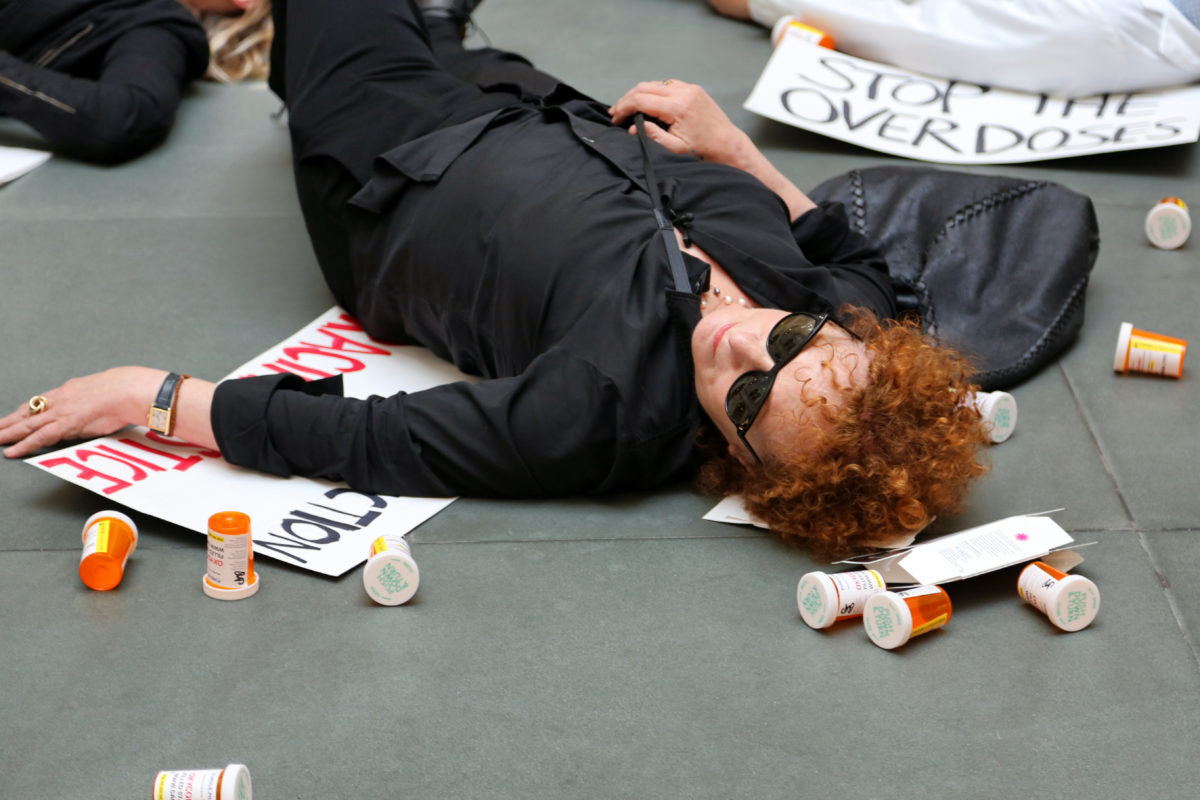
Sackler: the family name is splashed across museums, schools, hospitals, and, now, the Netflix homepage. Last week, the streaming platform released its 6-episode limited series, Painkiller, an aptly titled adaptation of Patrick Radden Keefe’s New Yorker story “The Family That Built an Empire of Pain” and Barry Meier’s Painkiller. The fictionalized show recounts the heyday and demise of Purdue Pharma, a drug company owned by the Sackler family, and its culpability in the opioid epidemic.
The latter has taken a colossal human toll. In 2021, the CDC estimated that more than 600,000 people had died from overdosing on opioids, prescribed or illicitly obtained, since 1999. For legendary photographer Nan Goldin, the issue is personal; she struggled with addiction after being prescribed OxyContin post-surgery. The experience led her to found the advocacy group P.A.I.N., rallying her creative community to shift the conversation around the crisis.
Art and its makers have always held the power to raise awareness, provoke consideration, and call to action. Throughout political upheaval, war, and battles over civil rights, artists have responded, both formally and functionally. Selected from countless examples, these five artists, all unique in approach, are united in their commitment to activism.
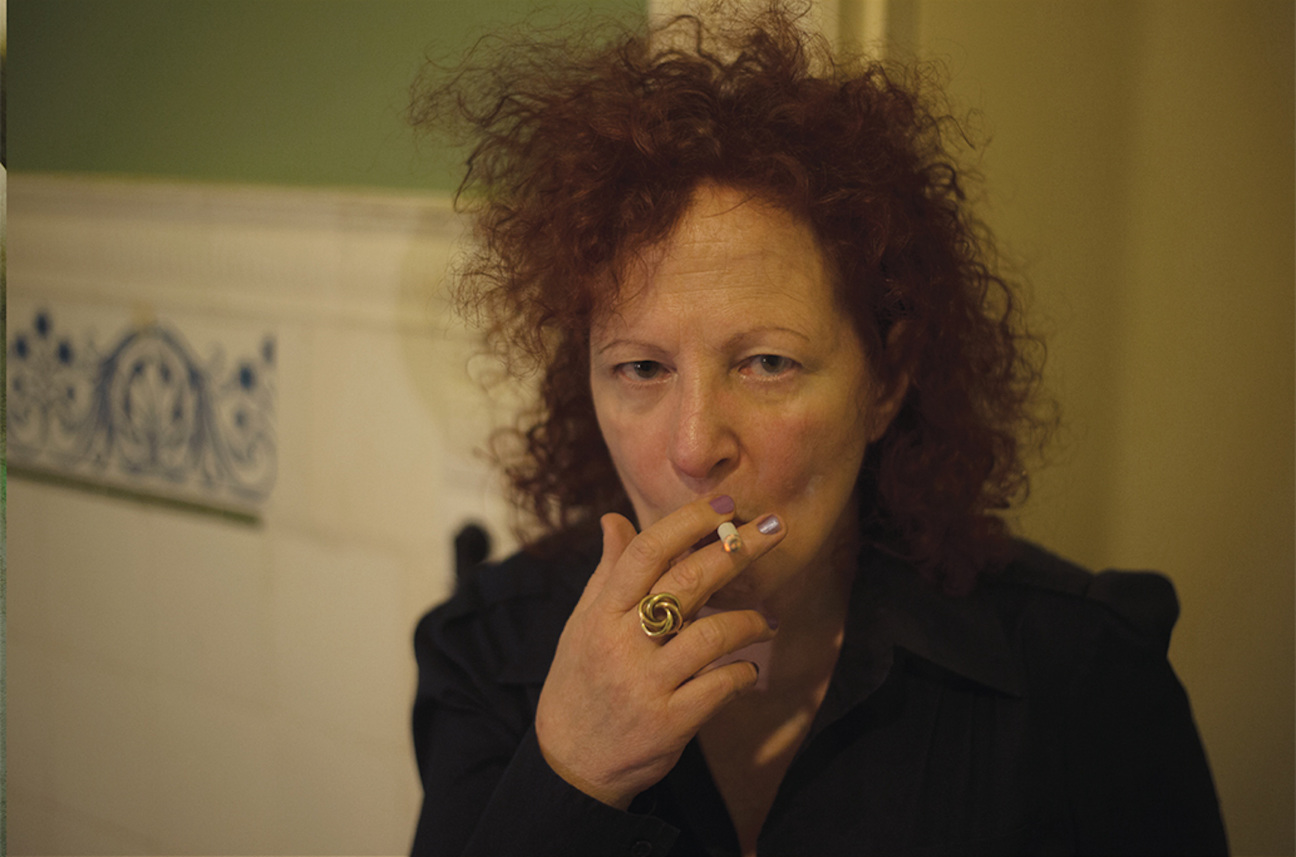
Nan Goldin
Nan Goldin is famed for her gritty, intimate photography, which most often has an autobiographical bent. After overdosing on what turned out to be fentanyl during her own OxyContin addiction, she sought treatment and, in 2017, founded P.A.I.N. (Prescription Addiction Intervention Now.) In the 2022 documentary, All the Beauty and the Bloodshed, Goldin said, "Photography was always a way to walk through fear," and her advocacy has extended this sentiment by challenging the forces behind the opioid epidemic. Goldin's January 2018 essay in Artforum laid out P.A.I.N.’s mission, connecting her personal struggle with the need to fight against those who have "washed their blood money through the halls of museums and universities."
Goldin's activism has translated into real-world demonstrations, taking her fight directly to institutions bearing the Sackler name. P.A.I.N. staged die-ins at art establishments, where activists feigned death on the front steps and across lawns, tossing empty prescription bottles and chanting slogans like "Shame on Sackler." Goldin refused to include her art in collections of museums accepting funds from the Sacklers. Successful targets have included the Guggenheim Museum, Metropolitan Museum of Art, National Portrait Gallery, and Louvre, all of which have cut ties with the infamous dynasty.
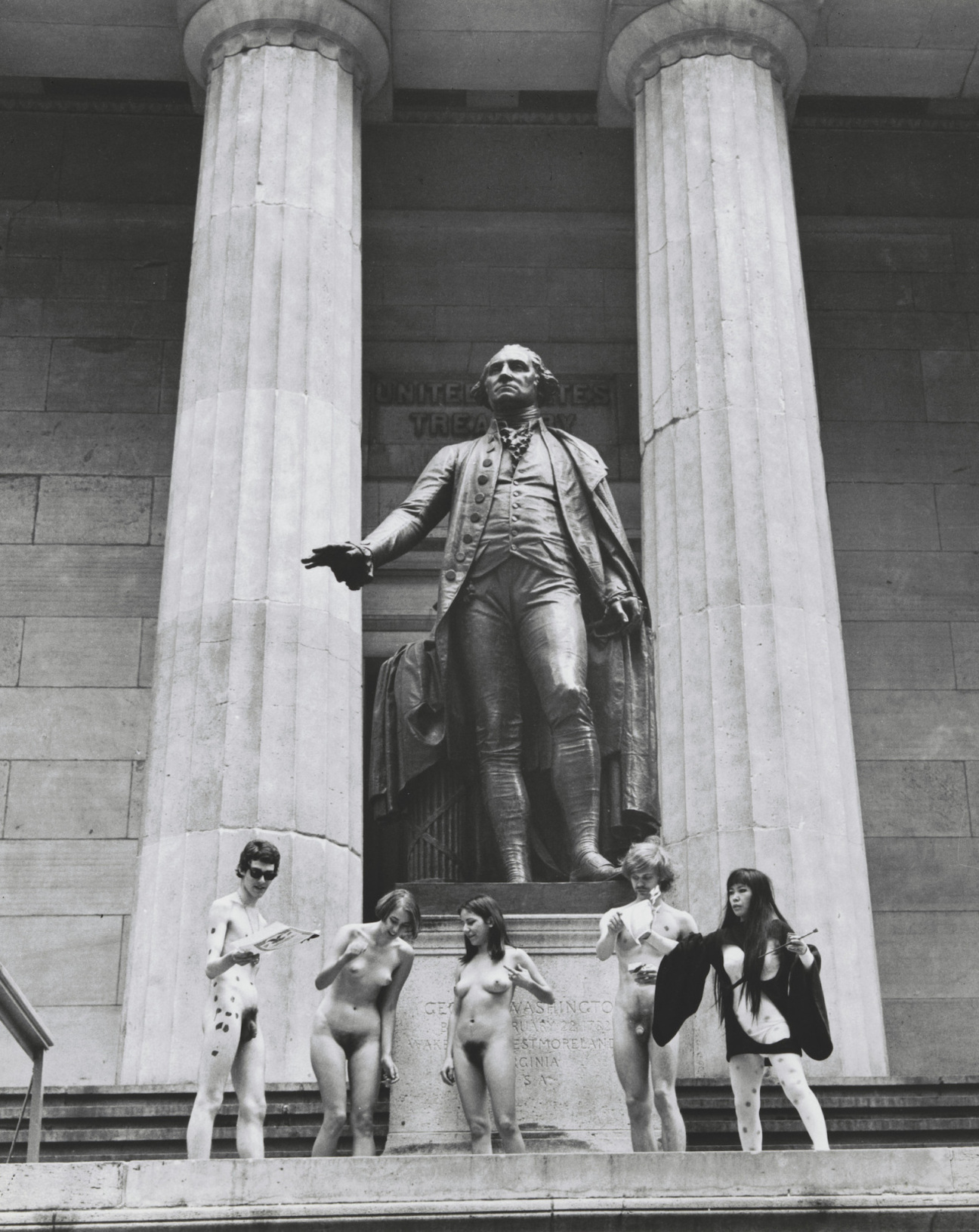
Yayoi Kusama
Amidst the social turbulence of the Vietnam War era, Japanese polymath Yayoi Kusama orchestrated daring protests, or “happenings,” in New York. They featured her practice of "self-obliteration," the process of overriding individuality, here through the use of her signature spot motif. She painted the colorful dots across the bodies of nude protesters. In 1968, she staged the first happening, Anatomic Explosion, outside of the New York Stock Exchange, declaring that its traded capital was fueling the war machine and enabling the United States’s continued involvement in Vietnam. Later that same year, she penned a letter to President Richard Nixon, writing: "Our earth is like one little polka dot, among millions of other celestial bodies, one orb full of hatred and strife amid the peaceful, silent spheres. Let’s you and I change all that and make this world a new Garden of Eden…. You can’t eradicate violence by using more violence."
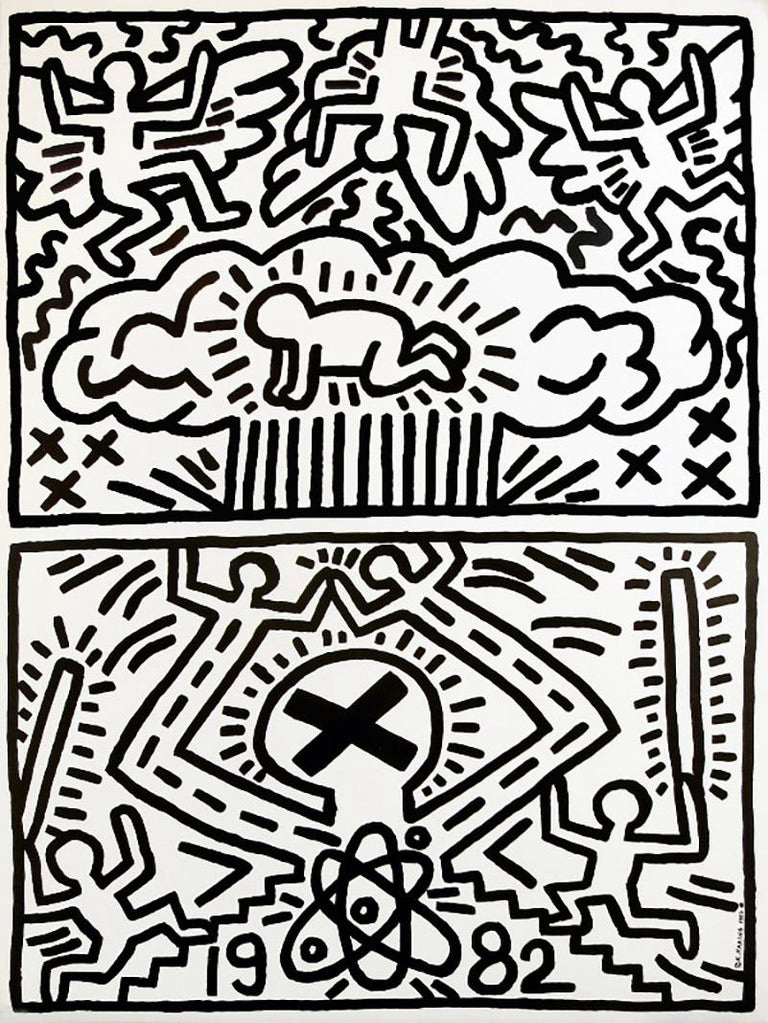
Keith Haring
Prominent in the 1980s graffiti and Pop art scenes, Keith Haring became easily recognizable for his bold, cartoonish style. The artist designed posters for anti-nuclear and anti-apartheid rallies, his imagery becoming a rallying cry for a variety of important causes. In 1987, the artist was diagnosed with HIV at the height of the epidemic. While many sought to turn attention away from the rapidly spreading disease, Haring spent the last two years of his life raising awareness about his condition. Slogans like “Ignorance = Fear” and "Silence = Death" appeared regularly in his work, as well as graphic depictions of queer sex, which was quickly becoming demonized as fear spread surrounding the mystery of HIV/AIDS. At 31, Haring died of AIDS-related complications, but not before accurately predicting the impact of his oeuvre toward the end of his life. In an interview with his biographer, the artist said, “Those works that I’ve created are gonna stay here forever. There’s thousands of real people, not just museums and curators that have been affected and inspired and taught by the work that I’ve done … the work is gonna live on long past when I’m gonna be here.”
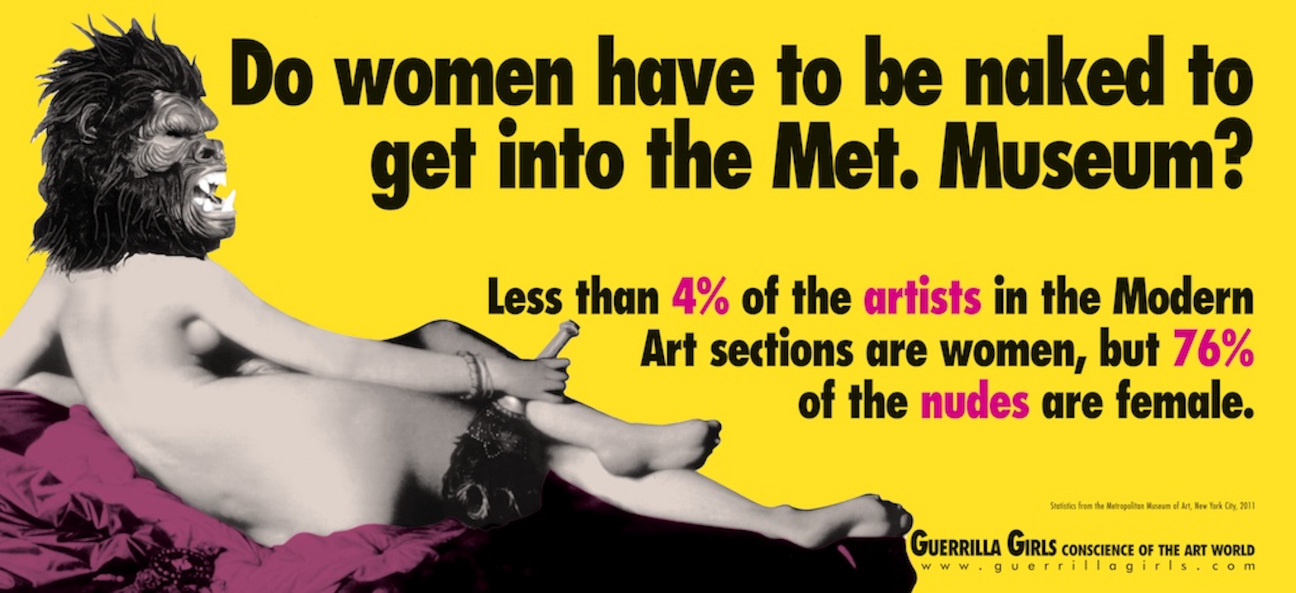
Guerilla Girls
The Guerilla Girls, an anonymous female art collective of gorilla mask-wearing protesters, rose to fame in the 1980s. The feminist activists staged protests to highlight the lack of recognition and inclusion of women in mainstream art institutions. Their posters, flyers, books, and other public signage, often plastered throughout Lower Manhattan, displayed witty quips like “Dearest Collector, It has come to our attention that your collection, like most, does not contain enough art by women,” and “Do Women Have To Be Naked To Get Into The Met. Museum?” The message was clear: art and political institutions were and are unequal spaces. As one flyer from 1986 pointed out, “Only 4 commercial galleries in N.Y. show black women. Only 1 shows more than 1.” On a semi-regular basis, members of the group would descend upon the Met to conduct "weenie" or "banana" counts, in which they'd compare the number of male and female nudes and artists featured. Numbers were abysmally skewed.
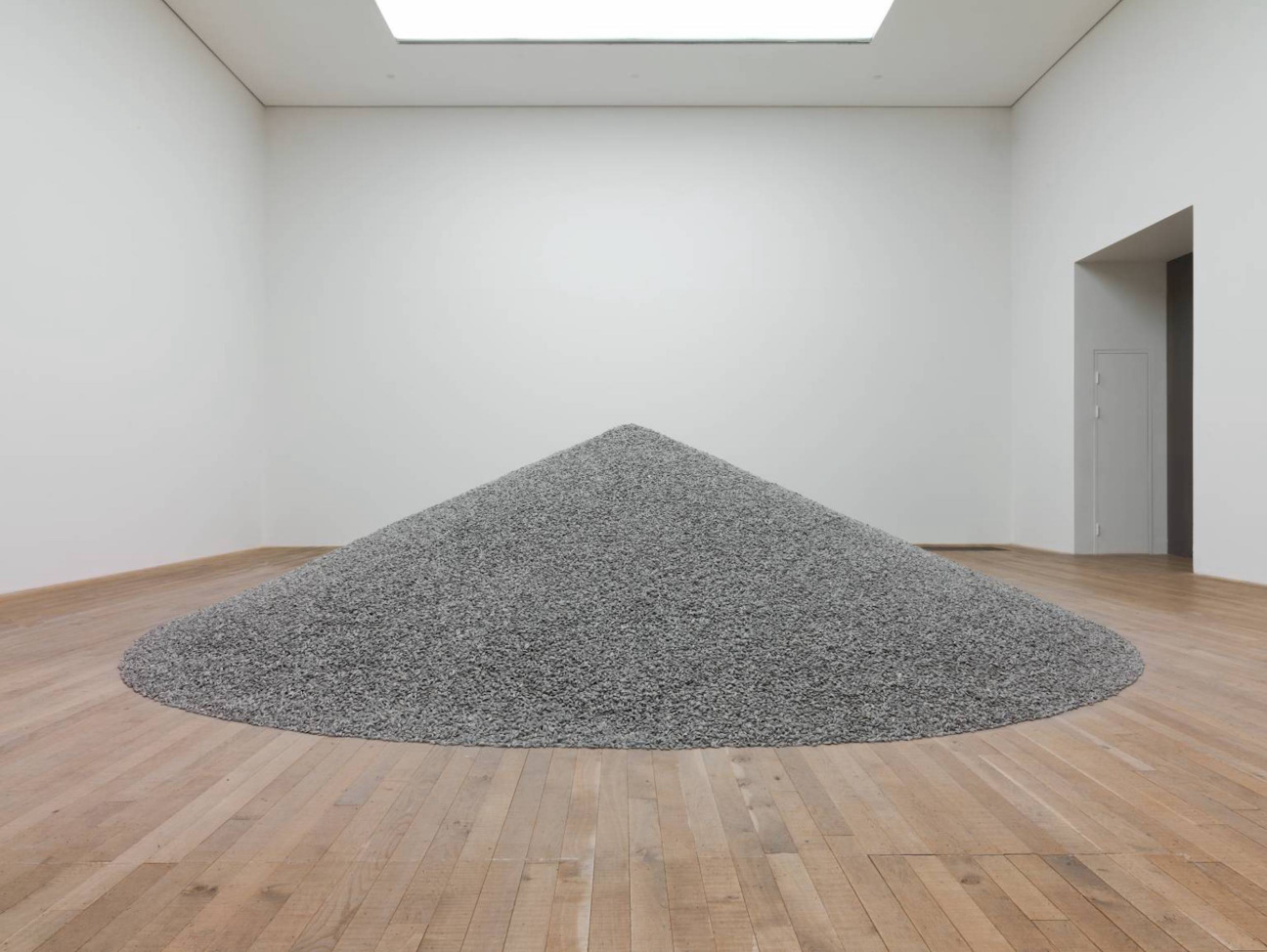
Ai Weiwei
A fearless critic of authoritarianism and human rights violations, Chinese contemporary artist and documentarian Ai Weiwei has used his art and platform to challenge China's Communist Party. His work has led to arrests and beatings at the hands of the Chinese police. Following a 2008 earthquake in Sichuan, he launched a "citizen's investigation," encouraging followers to help compile names of victims and combat the government's lack of transparency. In the art space, Ai is famed for installations like Sunflower Seeds, 2010, a collection of millions of hand-painted, porcelain sunflower seeds symbolizing the loss of individuality in a sea of masses. As a filmmaker, he's worked on documentaries Human Flow, 2017, which is about the global refugee crisis. In 2011, Ai was famously arrested and held in detention for three months on account of alleged economic crimes. The move, viewed as backlash against his political views, led to international upset until his release. In a 2020 interview with the Guardian, he recounted the experience, saying, "Before the arrest, confrontations were never direct because they did not want to have any argument … I was fighting against an invisible enemy, which is everywhere but nowhere at the same time. So when it did happen, I thought it was wonderful. We are sitting face to face, two metres across, looking at each other. You ask a question and I answer. I felt some sense of power and usefulness in being confronted directly."










 in your life?
in your life?

